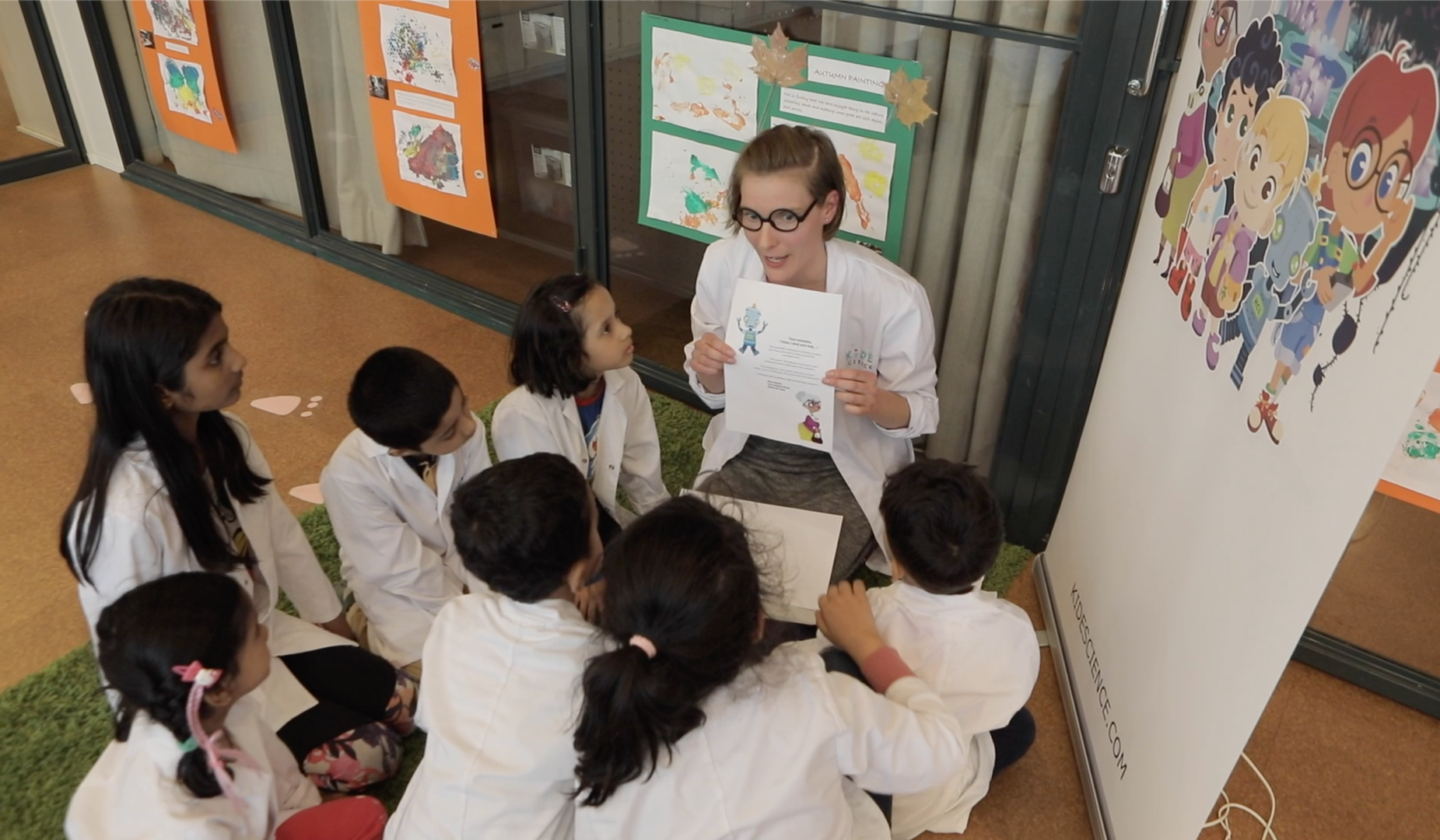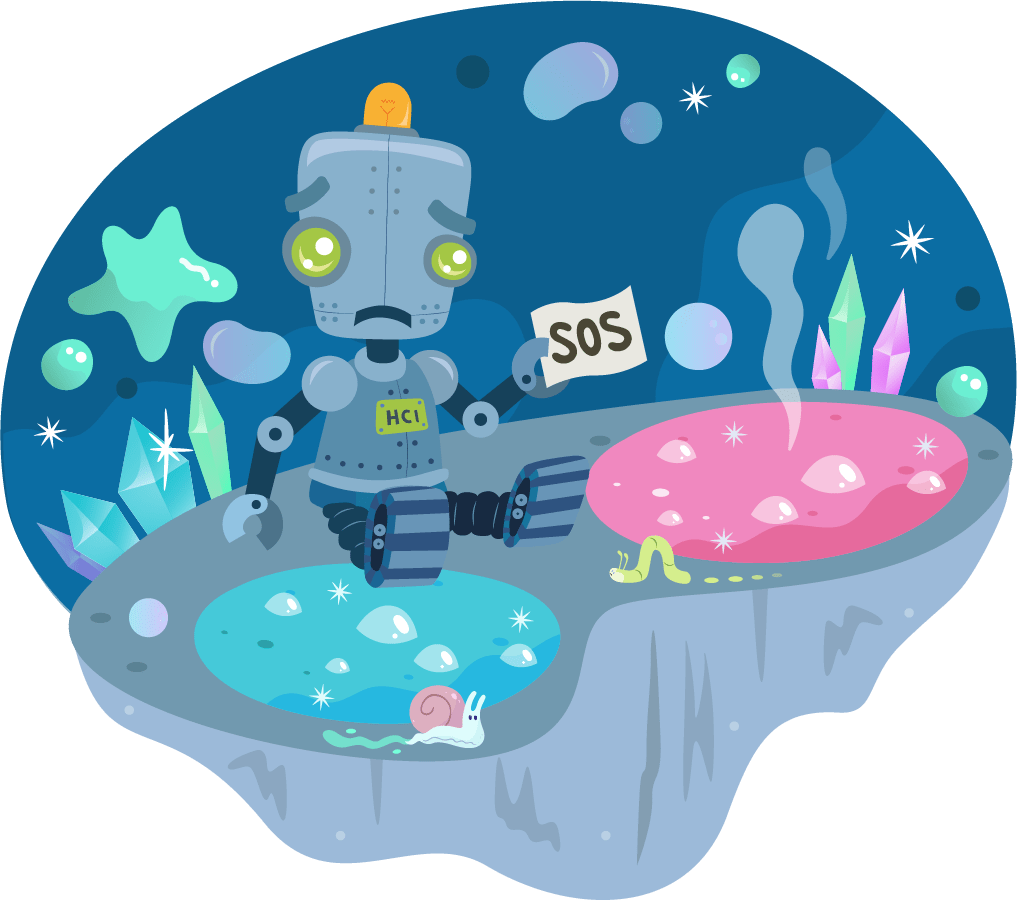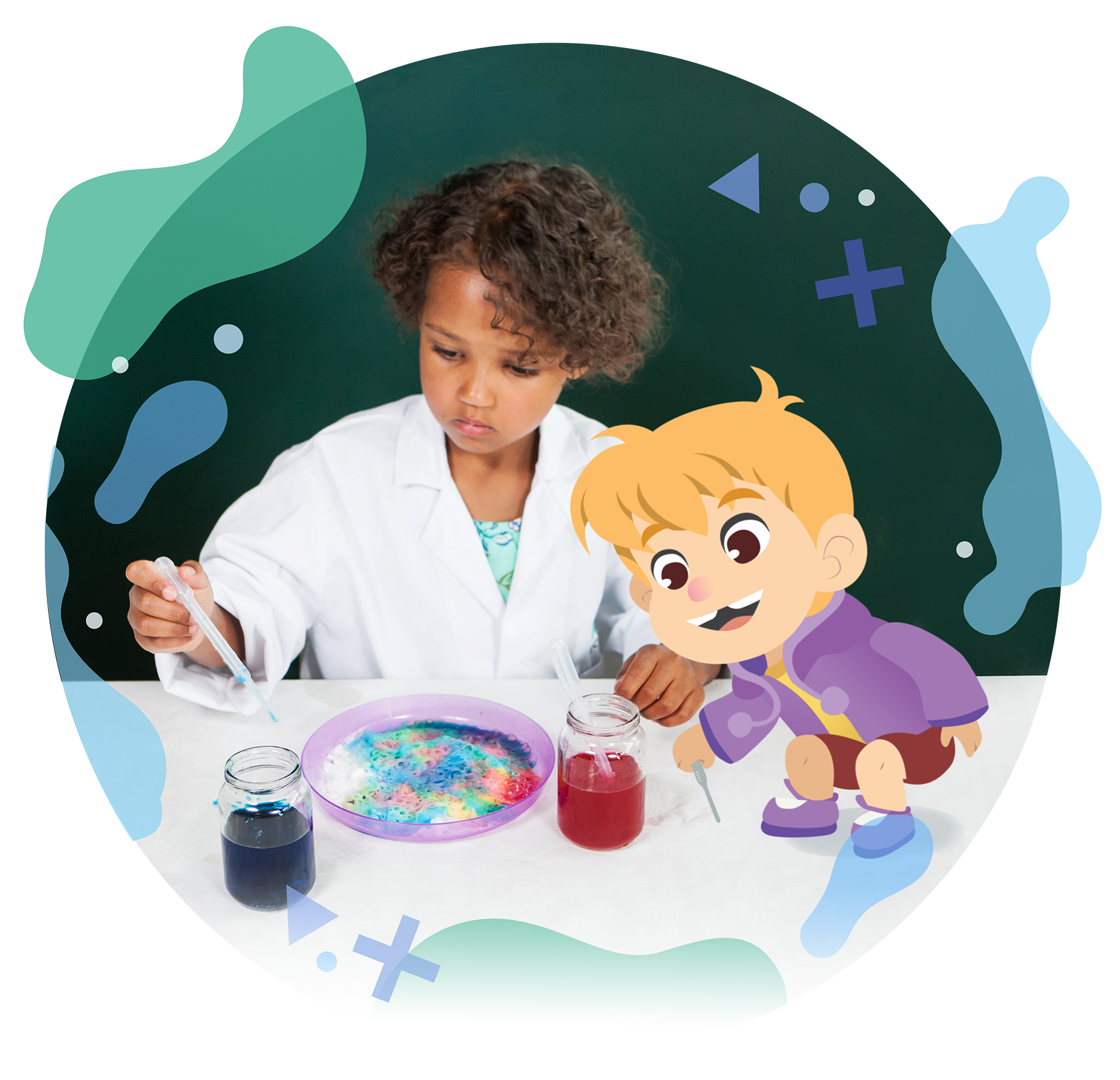How to Tell a Science Story
Stories are a natural way for humans to understand the world around them. This shouldn’t be surprising, but storytelling can be a great tool for teaching science, too. Here are some tips for introducing stories from our founder, Jenni Vartiainen, PhD.

When kids get tired, do you do a bedtime experiment?
When you need to explain something difficult, do you give them just the facts?
When they want to read, do you hand them a newspaper?
Of course not.
You give them a story.
Before the written word, humans relied on orators to pass information. More often than not, this information was transmitted in the form of story. Think of The Odyssey or The Iliad — even for the orator, telling those stories as facts would be overwhelming, and terribly boring for the listeners. The addition of story, though, makes those same facts into the bones of some of the greatest stories ever told.
Stories are a natural way for humans to understand the world around them.
This shouldn’t be surprising, but storytelling can be a great tool for teaching science, too. Here are some tips for introducing stories from our founder, Jenni Vartiainen, PhD.
I’m sure that you’re already using stories to teach your kids — they’re the default way to demonstrate a lot of principles and values (“Would you like that if they did that to you?” is a great story, for example).
Every invention began by imagining something that didn’t exist.
To use a concrete (err, liquid?) example:
-
One of our lessons explores the viscosity and density of liquids
-
Our story begins with a confused robot that is unable to remember what liquid he requires to function — he only remembers that it doesn’t mix with other liquids (spoiler alert: it’s an oil)
-
From there, he needs the help of the scientists to help him remember what it is will help him.
And because children are empathetic and involved in the story, they’re compelled to help! We can guide them in mixing multiple liquids, and ultimately discovering that of nearly all household liquids, it’s the oil (olive, sesame, vegetable, take your pick!) that doesn’t mix. The robot is saved, the scientist’s job is done, and the child has helped a new friend.
With that example in mind, here are a few ideas for introducing storytelling in science:
-
Hit the Basics. The goal of the story is to get the listener to relate on an emotional level. That means that the listener needs to feel what it’s like to live through the events in the story.
Introduce a situation with a combination of people, objects, and spaces for the listener to relate to, and then introduce a change or challenge. Let the listener take time to think, inhabit the world you’ve set up, and most importantly, ask questions.
If there’s anything kids love more than a story, it’s asking questions about that story! In our example case, we accomplish this by introducing a robot that needs your help. Who wouldn’t want to help a confused little robot? He’s adorable.
-
Build a Good Foundation. A building without a strong foundation will fall apart sooner or later. The same is true with a story — start with something clear that the listener knows. This anchors the story in something inherently relatable. If you start by talking about unexplained creatures from an unknown place, you might get interest, but you won’t get understanding. We want both.
From there, build up and out, moving from known to unknown, from concrete to abstract. Eventually, you’ll end up at the problem, that you’re trying to solve.To use our example again, the problem is our robot needing some sort of nourishment to function properly. Just as people need food and water, our robot character needs some mystery liquid. It’s a simple thing, easily grasped.
Finally, we introduce the challenge — finding out what that liquid is, and trying to sort out what happens when different liquids are introduced. That’s a more abstract, less known thing for a child. That said if your 3 year-old knows about viscosity, what are we even doing here? We should be learning from them.
-
Encourage creativity. The story will fall flat if you, as the storyteller, get to use your imagination, but the listener doesn’t.
Every invention began by imagining something that didn’t exist. This imagination not only encourages creative problem solving, but helps the learner connect seemingly unrelated ideas to learn something new. If creating new things were always as easy as taking the next logical step, groundbreaking innovations would be more common, and thus, a lot less groundbreaking.
To close up the references to our sample story: this is the mixing of the substances. We don’t give precise mixtures to try and the conclusions to draw, we let the child come up with their own mixtures, and help them observe what happens. Eventually (after you clean up the messes) it will be clear that it’s oil that doesn’t mix. Let them get there on their own (or at least, only provide as much guidance and encouragement as necessary).
Related articles
We use stories to set the research problem for the whole lesson and to awaken any previous...
We use the drama approach, as it helps the child to pay attention and motivates them to get...
We shouldn’t score children in early childhood education -- we ask enough of our teachers as it is....

